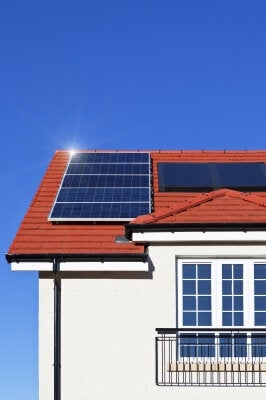
*Joan Ko [2006] is part of Arup's sustainability group in Melbourne. She did an MPhil in Engineering for Sustainable Development. Photo credit: Marcus and http://www.freedigitalphotos.net.
Over the past five years, more and more of my work is with developers who are developing new neighbourhoods or updating existing areas. As a sustainability consultant, I look for ways we can take advantage of large scale development to transform the efficiency of our energy, water, waste and transport systems. Neighbourhood development often has benefits over individual sustainable buildings.
For example, if you can build a cluster of office buildings next to residential buildings, then a local energy centre can generate electricity and heat throughout the day and share these across the buildings. In Australia, this arrangement can be 80% efficient, compared to the 35% efficiency of electricity from our large power stations.
Similarly, having a water recycling system for a whole neighbourhood is more cost-effective and easier to manage than each building having its own water recycling system.
Around the world, there are more and more examples of this kind of thinking. Treasure Island in San Francisco will recycle wastewater and compost on site. In Copenhagen, two neighourhood heating and cooling networks have been developed and will save 14,000 tonnes of greenhouse gases per year. We have planned a new inner Melbourne suburb where 10,000 people can live with no more water, waste or energy than an ordinary development for 3,000 people.
We often think developers are not interested in sustainability because it gets in the way of business. Even developers that want to 'do the right thing' will worry about costs.
Risky business
It helps to understand these big projects from a developer's point of view. Developers put enormous amounts of money into a development, without knowing how long it will take to finish or if anyone will buy the buildings once they are finished. It's a risky business.
Sustainable infrastructure works best if it is put in place early. So you can see why a developer would be nervous about investing in this infrastructure upfront, even if we know that infrastructure will be profitable in five or 10 years.
To overcome the deadlock, I have used two strategies: cluster-based infrastructure and procurement approaches that depend on the level of market maturity for each technology.
Cluster-based infrastructure means planning neighbourhoods that can be developed one small stage at a time. Each stage will contain the right mix of buildings that make sustainable infrastructure viable. Over the years, as a developer builds each stage, he or she can take advantage of the most cost-effective, efficient and reliable technology that exists at that future time. This approach minimises the risk of locking up resources early on.
The second strategy I've used is to show sustainable infrastructure to developers in three categories of market maturity. The most mature systems are cost-effective, low risk and widely available in the region. In many places, passive orientation of land plots and stormwater swales fall in this category. Developers can use these strategies straight away.
New technology
The second and third categories are technologies that are less market mature or not yet commercially viable. There may be fewer suppliers or the regulations are not clear. These systems need different procurement strategies to reduce the developer's risk. If the risk is managed, then a developer is more willing to design for these technologies.
Sometimes, my biggest wins have been where the developer future proofs a development so that in 10 years it's easier for this emerging system to be built in. This requires minimal investment upfront and I know that it will make all the difference for the future business case for an infrastructure system like stormwater recycling.
You might have walked around your neighbourhood and spotted sustainability opportunities. Let's think about it from the point of view of those that would need to invest upfront. Are there ways to break the project into smaller parts or spread it over time? If so, we could get going with it straight away.
